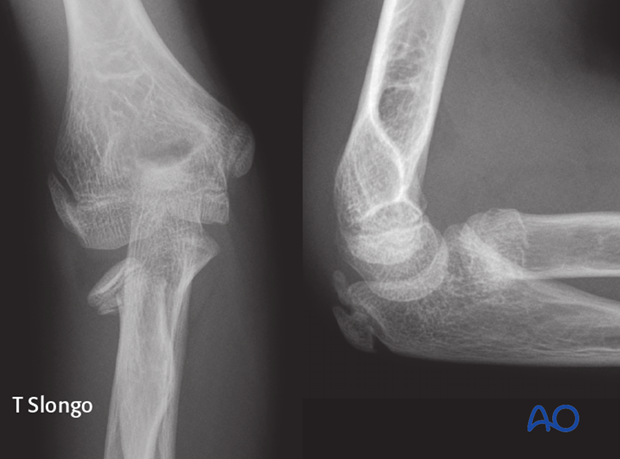21r-M/3 Radius, metaphyseal, complete
General considerations
Complete metaphyseal fractures of the radius are classified as 21r-M/3.
An additional code (I-III) takes into account the axial deviation and level of displacement.
21r-M/3.1 I Complete fracture, no angulation and no displacement
Type-I fractures are undisplaced without angulation.

21r-M/3 II Complete fracture, angulation with displacement of up to half of the bone diameter
These fractures may be simple (M/3.1 II) or fragmentary metaphyseal (M/3.2 II).
Type-II fractures are fractures with angulation and displacement of up to half of the bone diameter.
The annular ligament is intact but may be trapped between the fracture fragments.
The head may be impacted in the metaphysis.

21r-M/3 III Complete fracture, angulation with displacement of more than half of the bone diameter
These fractures may be simple (M/3.1 III) or fragmentary metaphyseal (M/3.2 III).
Type-III fractures are fractures with angulation and displacement of up to half of the bone diameter.
The annular ligament is intact but may be trapped between the fracture fragments.
The head may be impacted in the metaphysis.

Medial displacement
This fracture pattern is very rare.
The radial head may be completely displaced medially.
This type of fracture has the highest risk of AVN because of circumferencial disruption of the periosteum.
Pearl: Take care that the surgical approach does not complete disruption of the periosteum.

X-ray showing lateral displacement














